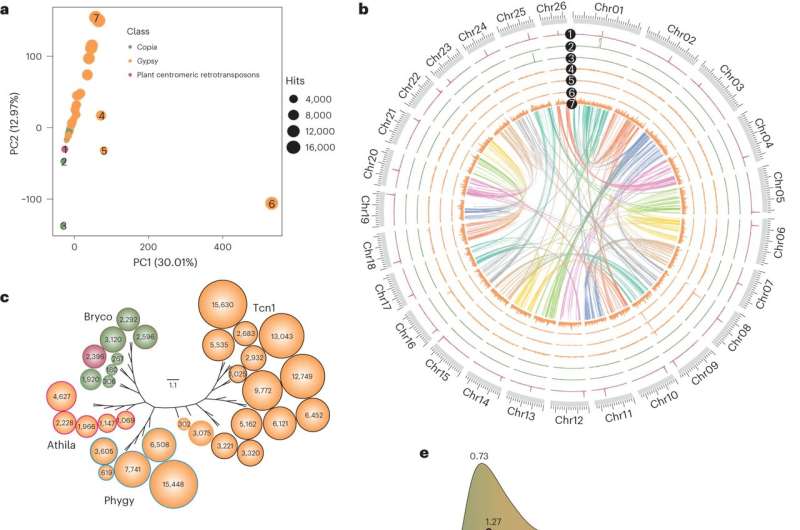This article has been reviewed according to Science X's editorial process and policies. Editors have highlighted the following attributes while ensuring the content's credibility:
fact-checked
peer-reviewed publication
trusted source
proofread
Researchers present near-complete genome version of spreading earth moss

The model organism spreading earth moss (Physcomitrium patens, formerly: Physcomitrella patens) has contributed significantly to a better understanding of plant evolution and development. Nevertheless, the currently known genome of Physcomitrium patens still contains numerous regions that are either incomplete or erroneous.
An international research team including University of Freiburg scientists has now presented a new, nearly complete version of the genome, showing among other things that the genome of the moss includes only 26 chromosomes, rather than the previously assumed 27.
"Future research on the evolution of the chromosome structure will profit from our data," says the cell biologist Prof. Dr. Stefan Rensing, professor for data integration and system modeling of eukaryotic model organisms at the University of Freiburg and co-author of the study. The findings were published in the journal Nature Plants.
In evolutionary terms, the line of mosses in a broader sense (bryophyta) separated from that of vascular plants some 500 million years ago. If we compare the characteristics of the representatives of these two main lines of terrestrial plants today, we can draw conclusions about the characteristics of the first terrestrial plants—in other words, those existing before the evolutionary split. However, this requires the best possible data. "The better the reference genome, the better the analyses," says Rensing. Here, the data offer many starting points for future research.
Genes acquired and lost
In concrete terms, the version of the genome of spreading earth moss now presented by the research team means that scientists will be able to deduce with greater certainty which genes in mosses were acquired in comparison to flowering plants and which were lost.
Ultimately, this will allow scientists to better understand the evolution of the chromosome structure—centromeres, telomeres, and conserved gene sequences—of terrestrial plants as a whole.
"The methods used are comparative genomics, phylogeny, synteny analysis, and ancestral state analysis," explains Rensing with regard to the research work.
More information: Guiqi Bi et al, Near telomere-to-telomere genome of the model plant Physcomitrium patens, Nature Plants (2024). DOI: 10.1038/s41477-023-01614-7
Journal information: Nature Plants
Provided by University of Freiburg





















